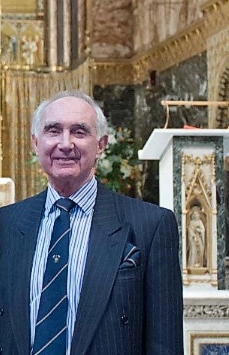


|
|
|
|||||||||||||||
|
|
||||||||||||||||
|
|
|||
|
|
London Church of the Immaculate Conception (Farm Street Church) 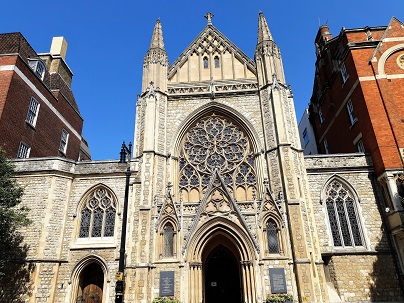
The Jesuit order was founded by St. Ignatius of Loyola in 1540, and is known for its work in the educational, missionary, and charitable areas throughout the world in retreats, hospitals and parishes. Jesuits are members of the Society of Jesus, which are part of the Roman Catholic Church. The church became famous for the work of its priests whose guidance given to those seeking advice gently led many to embrace the Catholic faith. The Church dates back to the 1840s when the Jesuits sought a site for their London Church. The site chosen was a mews which was originally stables and coachman quarters, although the name comes from the Hay Hill Farm located there in the 18th century. Its foundation stone was laid in 1843 and the church was opened in 1849, but simply as a Jesuit church open to the public but not the centre of worship for the parish. Nor was it used for the sacraments of marriage or baptism. It was not until 1966 that the church became the heart of the parish in the centre of Mayfair in the Archdiocese of Westminster and attracted its congregation from all over London and the surrounding area as well as visitors from around the world. The church is in neo-Gothic style and was designed by Joseph John Scoles, although it has undergone a number of changes. Originally the building was a simple “T” shape with a single nave with a vaulted ceiling supported by polished red granite clustered columns. It contained sixteen clerestory windows (windows located high in the walls, close to the roof) with side chapels to the left and right. In 1878 the Sacred Heart Aisle on the right of the High Altar was added, this contains large panels portraying the Stations of the Cross. At the end of the 19th century the St Ignatius Loyola Aisle was added to the left, this has side chapels and confessionals, carved within the piers. 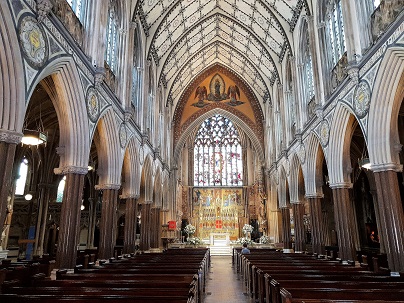 The chapels contain some beautiful artworks include the paintings by Andrew White, the church’s artist in residence, of Mother Mary. This is found in the Chapel of Annunciation and in fact looks like a photograph. 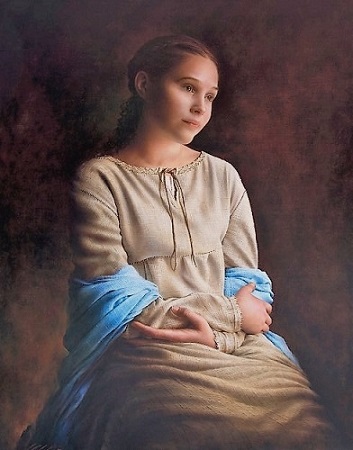 Also by Andrew White is a 12-foot-long canvas of the last supper. The canvas painted in 2013 was originally installed in Walsingham but was moved to Farm Street Church in 2018. Note: Prints of these paintings can be obtained direct from the artist via his website. 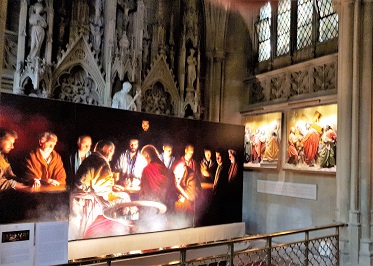 One of the chapels which is of specific interest is the Chapel of Our Lady of the Seven Dalours as it contains a bronze sculptor of Jesus as a homeless man. 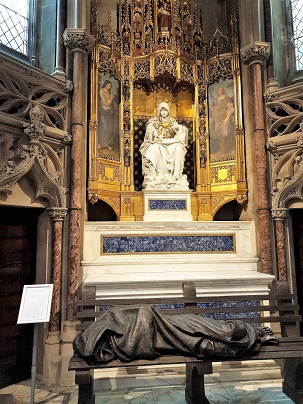 This is by Canadian sculptor Timothy Schmalz and depicts Jesus sleeping on a park bench. His face and hands are hidden under a blanket, but crucifixion wounds on his feet reveal his identity. This is a cast; the original is in Toronto. It is located inside the church to indicate the role that the church plays in providing sanctuary and its work with the homeless and with Refugees. The exterior of the building is of coursed rubble with fine dressings. The front South entrance has a gable with a rose window. Due to damage sustained by the building during the Second World War it was remodelled in 1951 by Adrian Gilbert Scott. The West front was redesigned and incorporated a new window by Evie Hone installed in 1953. 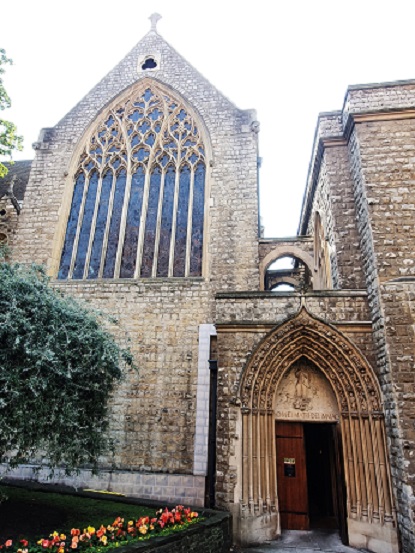 The High altar is by Augustus Pugin, chosen by Scoles due to his work on the Houses of Parliament. The Altar underwent restoration fairly recently and is not used for the celebration of mass, that is done on a marble altar in front. This altar being consecrated in 2019. To the rear of the altar are two mosaics that commemorate the annunciation and the Coronation of Mary. 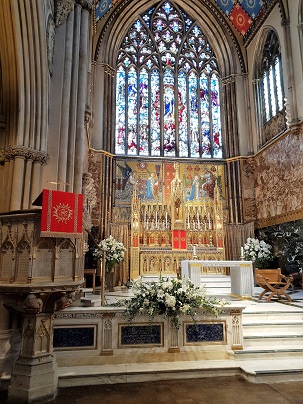 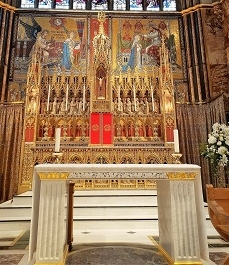 |
|
|
|
|
|||
All Photographs were taken by and are copyright of Ron Gatepain
| Site Map |
